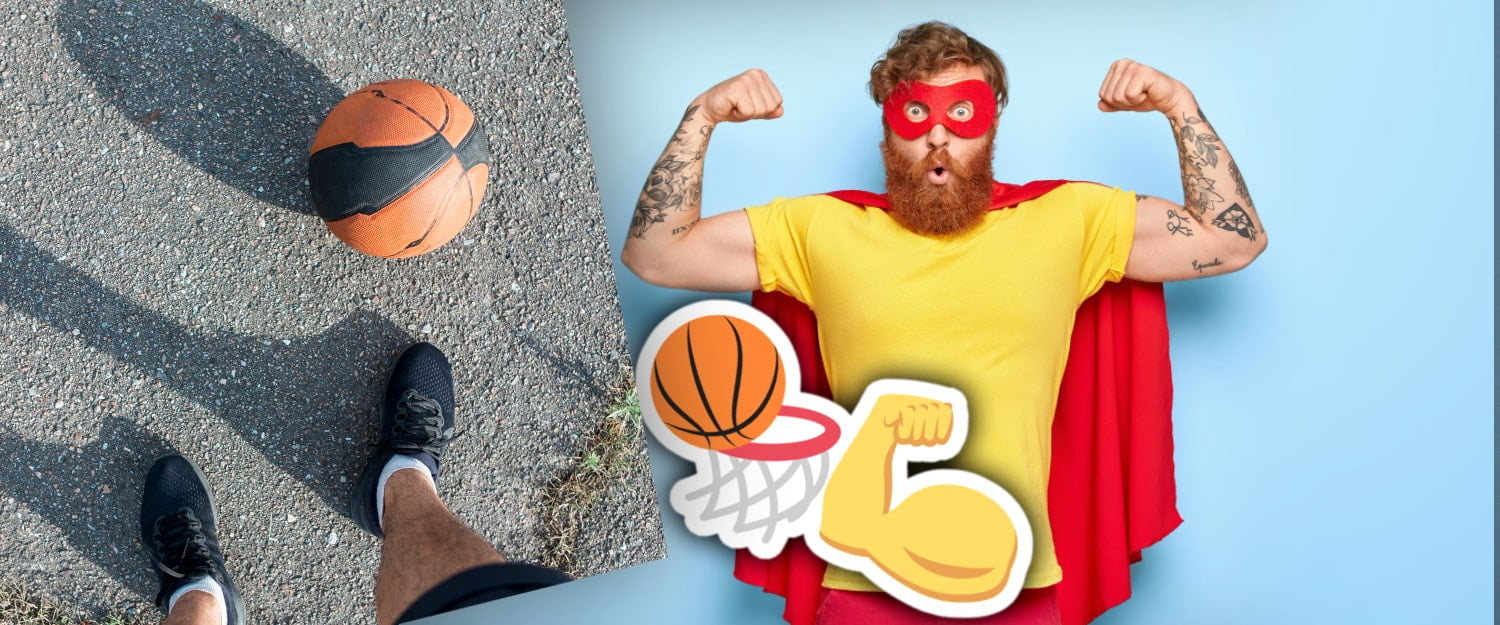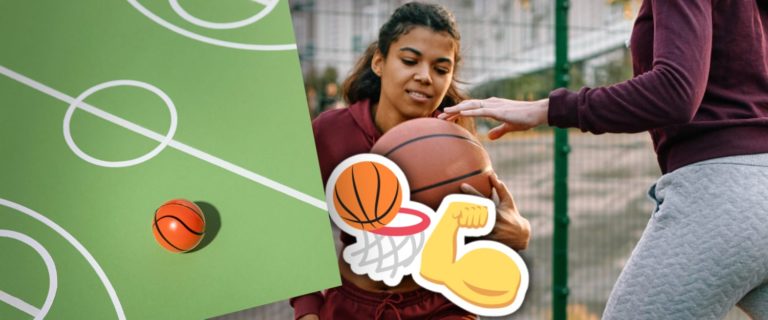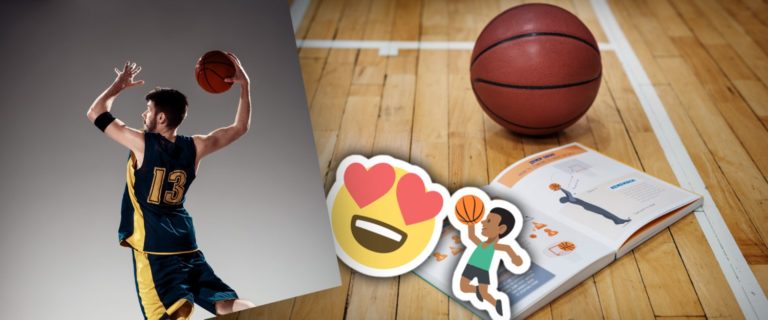How To Make A Return To Basketball: Tips And Tricks
It’s not easy to return to basketball after a long time away from the game. It takes some work and dedication to get back into shape for the sport, but it is possible! In this blog post, we will cover all of the tips and tricks on how you can return to basketball. We’ll go over what steps you need to take for your return-to-basketball process to be successful.
As well as how long it will take for you to return to playing at your highest level again. If you are returning from an injury or illness that kept you away from basketball. W7e have advice on how best to come back so that your return doesn’t hinder your future success with the game.
Where to Start When Returning to Basketball?
Basketball is an extremely physically demanding sport. So if you return to basketball after a long time away from the game (or even just took some extended breaks). You must get in great shape before jumping back into things.
Returning to basketball after a period of sedentary lifestyle requires a gradual and systematic approach to avoid injuries and improve overall fitness levels. Here are some tips that can help you get back into playing basketball safely and effectively:
- Start with low-intensity exercises: Begin with low-intensity exercises such as walking, light jogging, and stretching to increase your heart rate and prepare your body for more strenuous activities.
- Improve your endurance: Gradually increase the intensity and duration of your workouts to improve your cardiovascular endurance. This can include activities like cycling or swimming to build your aerobic capacity.
- Strengthen your muscles: Strength training exercises, such as squats, lunges, and push-ups, can help improve your overall strength and prevent injuries.
- Practice basketball-specific skills: Start practicing basketball-specific skills such as dribbling, shooting, and passing to get back into the sport. Start slowly and focus on proper technique before increasing intensity.
- Join a recreational basketball league: Joining a basketball league or finding a group of friends to play with can provide motivation and make the experience more enjoyable.
Build Up Your Cardio
You need to build up your cardio endurance for playing full games of basketball. If you’re not used to running around on the court constantly. Then college and high school games will be difficult for you at first! It takes about four weeks of consistent exercise routines or practices every day/multiple times per week before your body gets accustomed enough to handle all of the physical demands placed upon it during this type of activity.
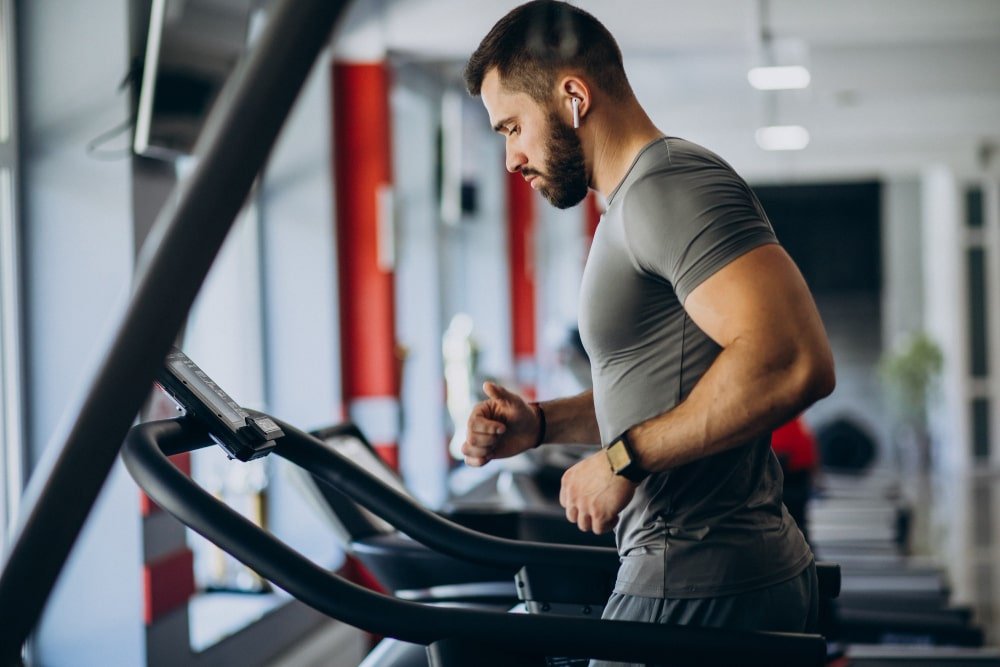
Hire a Trainer or Go to the Gym
Before returning, consider hiring a personal trainer. Who can show you how best to work out to get in shape for basketball. Or, you could return to the gym and see if any of your old workout buddies will help you out with some drills.
The First Four Weeks
During these first four weeks or however long it takes until your body gets used again to running around constantly (be sure to stretch daily as well). Commit yourself 100% toward waking up for morning workouts every day. This way when practices start coming around (if this is what’s stopping/delaying your return). You’ll be in good enough shape to attend them.
Preparing for Your Return to Basketball
Once you are ready for practice, keep practicing daily until the first game of the season comes around. If it ever becomes too much or if injuries return along with pain during practices/games. Then stop immediately and consult with your doctor before continuing again. You want to ensure that all parts of your body are working properly by having regular checkups throughout the return process!
Recommended Exercises to Get Back to Basketball
To return to basketball, you need a solid workout plan. We recommend circuits of cardio and strength training that can be done at home with minimal equipment. Or at the gym if you have access!
The Cardio
Basketball is a sport that requires a combination of cardiovascular endurance, agility, speed, and strength. Thus, cardio exercises that target these areas would be the most beneficial for basketball players. Here are some of the best cardio exercises for basketball and an in-depth analysis of each one:
- High-Intensity Interval Training (HIIT): HIIT is a form of cardio exercise that involves short bursts of high-intensity exercises followed by periods of rest. It is an effective way to improve cardiovascular endurance, increase agility and speed, and burn calories. HIIT workouts can be done using bodyweight exercises, such as burpees, jumping jacks, and mountain climbers, or with equipment such as a jump rope, medicine ball, or kettlebell.
- Running or Jogging: It is an excellent way to improve cardiovascular endurance and increase speed and agility. It can be done outdoors or on a treadmill, and players can incorporate sprints or hill runs to improve their explosive power.
- Jumping Rope: Jumping rope is a low-impact, high-intensity exercise that can help improve cardiovascular endurance, coordination, and footwork. It can be done anywhere and requires minimal equipment, making it a convenient option for players.
- Swimming: Swimming is a low-impact, full-body exercise that can help improve cardiovascular endurance, strength, and flexibility. It is a great option for players who may have joint issues or who want to vary their cardio workouts.
Strength & Conditioning
Strength and conditioning exercises are essential to help basketball players improve their performance, prevent injuries, and stay in top shape. Here are some of the essential strength and conditioning exercises for basketball:
- Squats: Squats are a compound exercise that target multiple muscle groups, including the quadriceps, glutes, and hamstrings. They help improve lower body strength, power, and explosiveness, which are essential for jumping, sprinting, and changing direction on the court. Variations such as front squats, back squats, and single-leg squats can be incorporated to increase difficulty and target different muscle groups.
- Deadlifts: Deadlifts are a compound exercise that target the back, glutes, and hamstrings. They help improve lower body strength and power, as well as overall athleticism. Deadlifts can be done with a barbell, dumbbells, or kettlebells, and variations such as sumo deadlifts and Romanian deadlifts can be incorporated to target different muscle groups.
- Lunges: Lunges are a unilateral exercise that target the glutes, quadriceps, and hamstrings. They help improve lower body strength, power, and stability, which are important for changing direction and maintaining balance on the court. Variations such as walking lunges and reverse lunges can be incorporated to target different muscle groups and increase difficulty.
- Plyometrics: Plyometric exercises involve explosive movements that help improve power, speed, and agility. Examples include box jumps, jump squats, and bounding. Plyometrics should be done with caution and under proper supervision, as they can be challenging and increase the risk of injury if done improperly.
- Core Exercises: Core exercises such as planks, Russian twists, and bicycle crunches help improve core strength and stability, which are essential for maintaining balance and changing direction on the court. They can also help prevent lower back injuries.
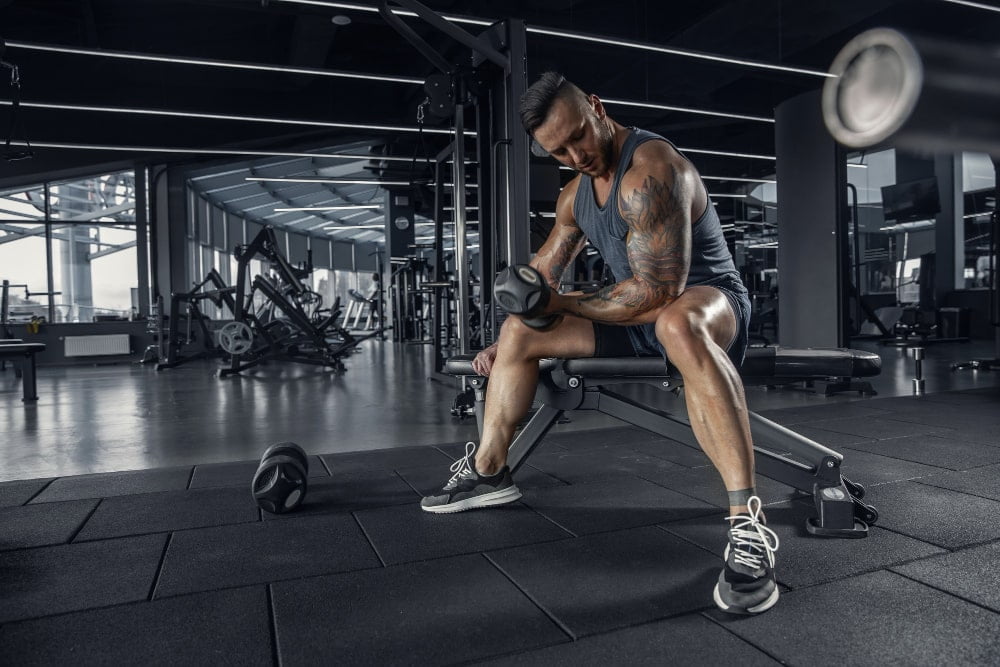
Tips on How to Prevent Injuries When Returning to Basketball?
Returning to basketball after a long period of inactivity can be challenging, and there is a risk of injury if proper precautions are not taken. Here are some tips to prevent injuries when returning to basketball:
- Start Slowly: It is essential to start slowly and gradually increase the intensity of your workouts to avoid overuse injuries or strains. Begin with low-impact exercises such as walking or cycling and gradually increase the duration and intensity of your workouts.
- Warm-up and Stretch: Warming up and stretching before and after workouts can help prevent injuries. A proper warm-up should include dynamic stretches that target the major muscle groups used in basketball, such as the quads, hamstrings, and calves. Static stretching should be done after the workout to increase flexibility and prevent muscle soreness.
- Focus on Proper Technique: Proper technique is crucial to prevent injuries. Basketball requires a combination of agility, speed, and explosive power, and it is important to focus on proper form to prevent strains or muscle imbalances. Seek the advice of a qualified coach or trainer to ensure that you are using proper technique.
- Incorporate Strength and Conditioning Exercises: Strength and conditioning exercises can help prevent injuries by improving strength, flexibility, and endurance. Focus on exercises that target the specific demands of basketball, such as squats, lunges, and plyometrics.
- Rest and Recover: Rest and recovery are essential to prevent injuries. Adequate rest between workouts allows your muscles to recover and prevents overuse injuries. Incorporating activities such as yoga or foam rolling can also help improve flexibility and prevent muscle soreness.
- Listen to Your Body: Finally, it is important to listen to your body and avoid pushing yourself too hard. If you experience pain or discomfort during a workout, stop and seek medical advice. Ignoring the warning signs of an injury can lead to more severe injuries and longer recovery times.
Preventing injuries when returning to basketball requires a gradual approach, By taking these precautions, you can safely and effectively return to basketball and have a greater chance of avoiding injuries.
Take the Opportunity to Return Even Better
Use this return-to-basketball period as a chance to learn new techniques so that you don’t have to rely on your old tricks anymore. You return to basketball with a fresh new attitude and approach so you can play better than ever before.
How Long Does it Take to Get Back Into Basketball Shape?
The time frame for returning will depend on how long you were away from basketball (whether due to an injury, illness, etc.)
The time it takes to get back into basketball shape after a long period of inactivity can vary depending on several factors, including age, fitness level, and the length of the inactive period. However, a general guideline is that it can take approximately 4-6 weeks to get back into basketball shape, with the exceptions if you are medically cleared and clinically heathy.
During the first week, the focus should be on building a foundation of cardiovascular fitness by engaging in low-impact activities such as walking, cycling, or swimming.
In the second week, athletes can gradually increase the intensity and duration of their workouts, incorporating more basketball-specific drills such as dribbling, shooting, and passing.
The third and fourth weeks should focus on building strength and explosiveness through weight training and plyometric exercises.
By the fifth and sixth weeks, athletes should be ready to start playing in full games and scrimmages.
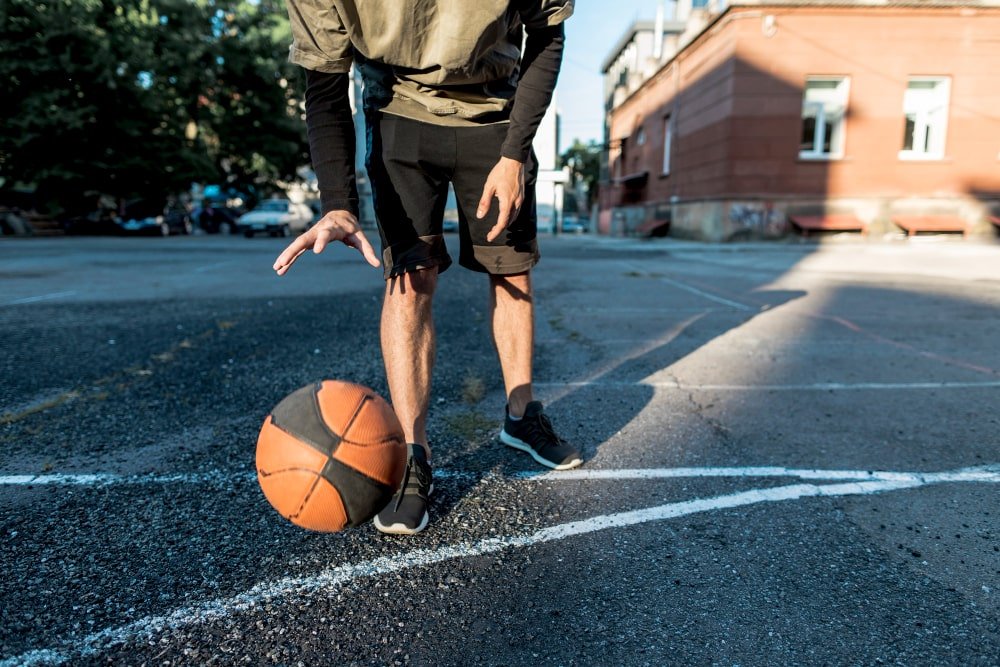
However, it is important to note that the timeline for returning to basketball shape can vary depending on individual factors such as age, fitness level, and the severity of the inactive period.
Older athletes or those who were inactive for a longer period may require more time to get back into basketball shape. Additionally, athletes recovering from injuries should work with their healthcare provider to determine a safe and appropriate timeline for returning to basketball activities.
Conclusion
The bottom line for all returners: listen to your body and return at a pace that is comfortable for you.
Thanks again for reading our blog post about how to make a return back into basketball and we hope that this was helpful for anyone who has been away from playing their favorite sport or just looking for tips on becoming better at basketball in general. We also have many more posts coming so stay tuned! Thanks again!


